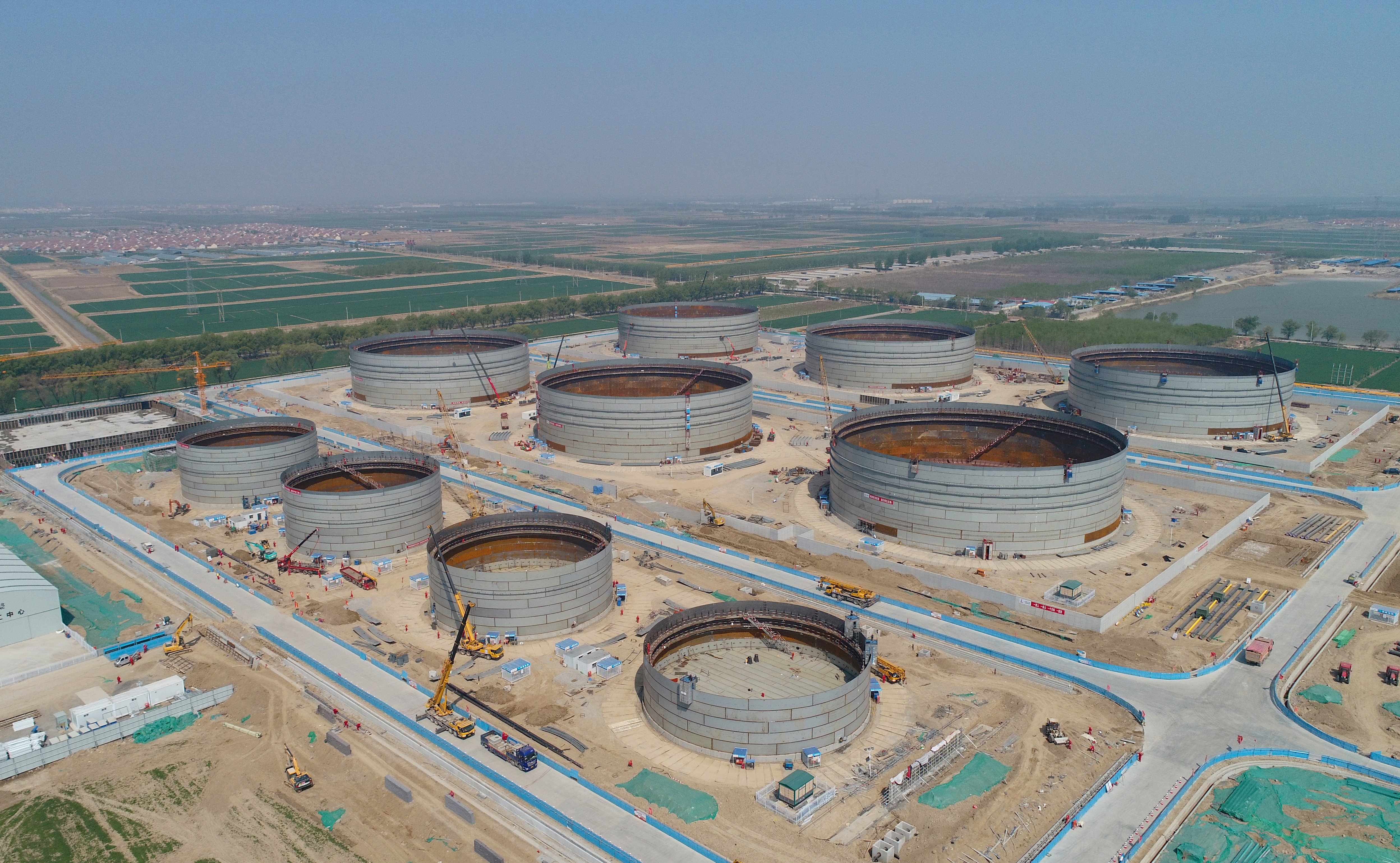Tech Innovation Drives China's Low Carbon Development

A carbon-neutral oil depot is under construction in Dongying city, Shandong province. (PHOTO: VCG)
By CHEN Chunyou
To tackle the challenges of climate change, more than 130 countries and regions have put forward the goal of carbon peaking and carbon neutrality. Sci-tech innovation is the key component to achieving this goal.
In China, a plan and a technology roadmap on supporting carbon peaking and carbon neutrality are being formulated. The Ministry of Science and Technology is organizing universities, enterprises and research institutes to propose major R&D projects and explore breakthroughs together.
Many regions, such as Beijing, Shanghai and Jiangsu, have proposed to take the lead in achieving carbon peaking in advance in their 14th Five-Year Plans. Among them, Anhui, Chongqing, Hubei and Hebei are committed to stepping up efforts to tackle green and low-carbon technologies.
For example, Anhui province has listed the competitive low-carbon industries on the preferential development agenda, and set up special projects, themed on ecology, carbon peaking and carbon neutrality, while also establishing the Anhui Energy Internet Joint Fund in provincial sci-tech program.
Hubei province has approved the establishment of the Carbon-Neutral Technology Innovation Research Institute, aiming to build the province into a national leader in demonstrating green and low-carbon technological innovation.
On April 15, the National Assessment Report on Development of Carbon Capture Utilization and Storage (CCUS) Technology in China was released. It is estimated that China's CO₂ capture capacity will reach up to 600 million tons per year by 2030.
This report predicts the development trend and the emission reduction potential of the CCUS technology, which can provide the scientific basis for formulating policies on industrial emission reduction at national and local levels.
According to the report, the CCUS involves many fields, such as electricity, chemical engineering, cement and steel, ensuring China's energy security on the premise of meeting the demand for emission reduction.
Yuan Shiyi, academician of Chinese Academy of Engineering, suggested that a mid- and long-term development plan and annual plan should be formulated as early as possible to advance the CCUS technology development.


